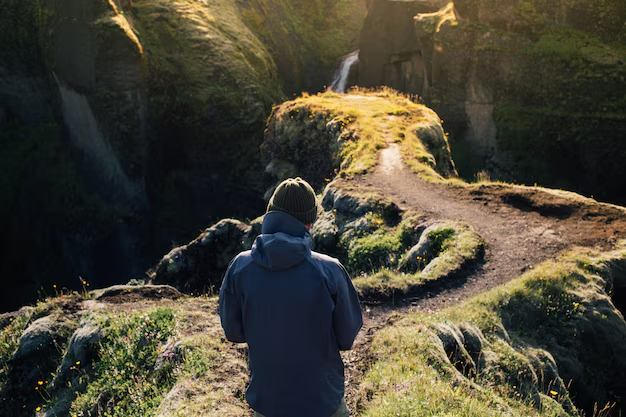Devil’s Peak, South Africa: The Perils of Hiking and Missing Hikers

Devil’s Peak, a towering landmark in Cape Town, South Africa, is one of the most iconic and challenging hiking destinations in the region. Known for its dramatic views, rugged terrain, and historical significance, it attracts hikers from around the globe. However, this breathtaking beauty comes with its dangers. Over the years, there have been numerous reports of hikers going missing or getting injured on its steep paths. You know about devils peak south africa hiker missing?
This article explores the allure of Devil’s Peak, the risks associated with hiking in the area, and the story of missing hikers, emphasizing the need for safety and preparedness.
Devil’s Peak: A Cape Town Icon
Rising to an altitude of 1,000 meters above sea level, Devil’s Peak is part of the Table Mountain range. Its unique silhouette adds a distinctive feature to Cape Town’s skyline, alongside Table Mountain and Lion’s Head.
The peak’s name is steeped in folklore. One popular legend tells of a smoking contest between a Dutch pirate, Jan van Hunks, and the devil. This tale is said to explain the cloud cover, often referred to as the “tablecloth,” that blankets the peak. You know about devils peak south africa hiker missing?
Beyond its legends, Devil’s Peak is a magnet for outdoor enthusiasts. The trails offer panoramic views of Cape Town, the Atlantic Ocean, and the Cape Flats. The combination of natural beauty and historical allure makes it a sought-after destination for locals and tourists alike.
The Dangers of Hiking Devil’s Peak
Despite its appeal, Devil’s Peak is not without its hazards. The mountain’s rugged terrain, steep slopes, and unpredictable weather make it a challenging hike, even for experienced adventurers.
1. Harsh Terrain
The trails around Devil’s Peak range from moderate to extremely difficult. Loose rocks, steep inclines, and narrow paths can pose serious risks, especially for those unfamiliar with the area. You know about devils peak south africa hiker missing?
2. Sudden Weather Changes
Cape Town’s weather can change rapidly. Clear skies can give way to thick fog, heavy rain, or strong winds within minutes, significantly reducing visibility and increasing the risk of accidents.
3. Limited Cell Reception
In certain areas of Devil’s Peak, cell phone reception is unreliable. This can make it difficult for hikers to call for help in emergencies, further complicating rescue efforts.
4. Wildlife and Natural Hazards
While rare, encounters with wildlife such as snakes can occur. Additionally, the risk of dehydration, heatstroke, or hypothermia is present depending on the season and time of day.
Hiker Missing on Devil’s Peak
One of the recurring issues that has brought Devil’s Peak into the spotlight is the alarming number of hikers reported missing in the area. These cases often highlight the mountain’s inherent dangers and underscore the importance of preparation and caution.
Recent Cases
One of the most recent incidents involves a hiker who went missing while attempting to summit Devil’s Peak. Reports indicate that the individual set out early in the morning, expecting to return by afternoon. However, they failed to check in with friends or family as planned, prompting a search and rescue operation.
Challenges in Search and Rescue
Rescuing a missing hiker on Devil’s Peak is a complex process. The dense vegetation, rocky outcrops, and vast expanse of the area make it difficult for search teams to locate individuals.
Helicopter searches, drone technology, and volunteer hiking groups are often deployed in such cases. However, poor weather conditions can hinder these efforts, delaying rescue operations.
The Importance of Hiking Preparedness
Hiking is a rewarding activity, but it requires careful preparation, especially on challenging trails like Devil’s Peak. The following tips can help reduce risks and ensure a safer hiking experience:
1. Plan Your Route
Research the trail before setting out. Know the distance, difficulty level, and estimated time to complete the hike. Inform someone about your planned route and expected return time.
2. Check the Weather
Always check the weather forecast before heading out. Avoid hiking if there’s a chance of rain, fog, or strong winds.
3. Pack Essentials
Carry a fully charged phone, a map or GPS device, plenty of water, snacks, a first aid kit, and appropriate clothing. Layers are essential to adapt to changing weather conditions.
4. Hike in Groups
Whenever possible, hike with a group. There’s safety in numbers, and having companions increases the chances of getting help in emergencies.
5. Know Your Limits
Be realistic about your fitness level and experience. If a trail seems too challenging, it’s better to choose a less demanding route.
Rescue Teams and Community Efforts
Cape Town is home to several dedicated rescue teams and organizations that work tirelessly to locate missing hikers. Groups like the Wilderness Search and Rescue (WSAR) and the Mountain Club of South Africa play a critical role in ensuring the safety of adventurers in the area.
These organizations rely on volunteers, donations, and public awareness campaigns to support their efforts. Hikers are encouraged to familiarize themselves with emergency contact numbers and procedures before embarking on their journey.
Preserving the Beauty and Safety of Devil’s Peak
While the risks associated with Devil’s Peak are real, they shouldn’t deter adventurers from experiencing its beauty. By taking proper precautions, hikers can enjoy the mountain’s trails while minimizing dangers.
Community awareness and responsible tourism are key to preserving Devil’s Peak as a safe and accessible destination. Initiatives such as trail maintenance, clear signage, and safety workshops contribute to a safer environment for all.
Conclusion
Devil’s Peak, South Africa, is a breathtaking yet challenging hiking destination. Its allure lies in its stunning views, historical significance, and adventurous trails. However, the dangers associated with its terrain and weather make it essential for hikers to be well-prepared and cautious.
The stories of missing hikers serve as sobering reminders of the risks involved. Through collective efforts, including those of rescue teams and the hiking community, it’s possible to make Devil’s Peak a safer place for exploration. With the right mindset and precautions, adventurers can continue to marvel at this iconic landmark while respecting its formidable nature.
